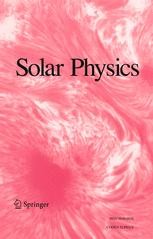Editors' Choice: "Simulating White-Light Images of Coronal Structures for Parker Solar Probe/WISPR"
 Nisticò, G., Bothmer, V., Vourlidas, A. et al. Simulating White-Light Images of Coronal Structures for Parker Solar Probe/WISPR: Study of the Total Brightness Profiles. Sol Phys 295, 63 (2020). https://doi.org/10.1007/s11207-020-01626-y
Nisticò, G., Bothmer, V., Vourlidas, A. et al. Simulating White-Light Images of Coronal Structures for Parker Solar Probe/WISPR: Study of the Total Brightness Profiles. Sol Phys 295, 63 (2020). https://doi.org/10.1007/s11207-020-01626-y
Editor's Choice (Research Article) | Open Access
Published: 29 April 2020
Abstract:
The Wide-field Imager for Parker Solar Probe (WISPR) captures unprecedented white-light images of the solar corona and inner heliosphere. Thanks to the uniqueness of the Parker Solar Probe’s (PSP) orbit, WISPR is able to image “locally” coronal structures at high spatial and time resolutions. The observed plane of sky, however, rapidly changes because of the PSP’s high orbital speed. Therefore, the interpretation of the dynamics of the coronal structures recorded by WISPR is not straightforward. A first study, undertaken by Liewer et al. (Solar Phys. 294, 93, 2019), shows how different coronal features (e.g., streamers, flux ropes) appear in the field-of-view of WISPR by means of raytracing simulations. In particular, they analyze the effects of the spatial resolution changes on both the images and the associated height–time maps, and introduce the fundamentals for geometric triangulation. In this follow-up paper, we focus on the study of the total brightness of a simple, spherical, plasma density structure, to understand how the analysis of Thomson-scattered emission by the electrons in a coronal feature can shed light into the determination of its kinematic properties. We investigate two cases: (i) a density sphere at a constant distance from the Sun for different heliographic longitudes; (ii) a density sphere moving outwardly with constant speed. The study allows us to characterize the effects of the varying heliocentric distance of the observer and scattering angle on the total brightness observed, which we exploit to contribute to a better determination of the position and speed of the coronal features observed by WISPR.
Solar Physics Editor's Choice:
In each volume of Solar Physics, a few articles are marked as “Editors’ Choice”. The primary criteria is original, high quality research that is of wide interest within the community.
